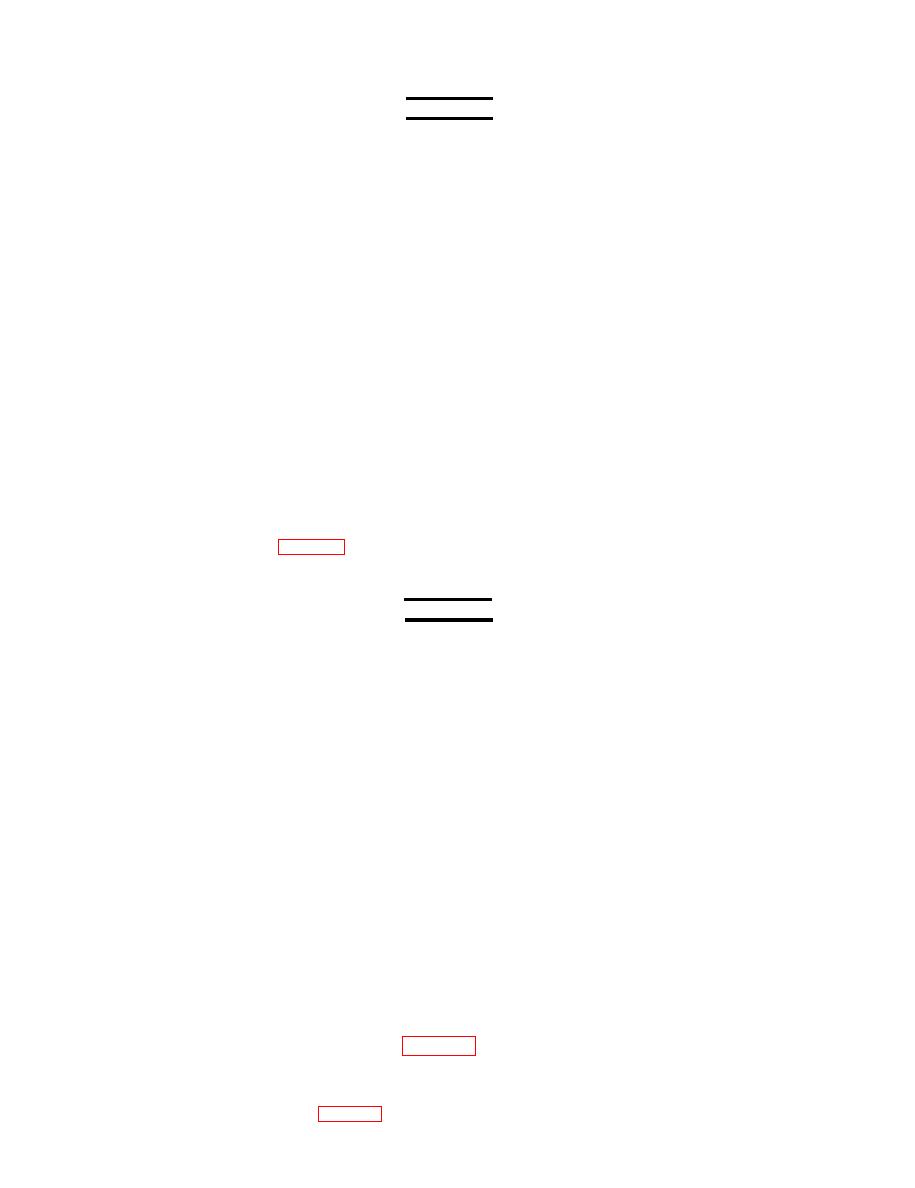
TM 9-4120-360-14
CAUTION
Do not attempt to charge liquid refrigerant into the suction line. The compressor would be damaged.
NOTE
Two kinds of refrigerant cylinders are in general use. One is equipped with a single shutoff valve, and must
be inverted when charging liquid refrigerant. The other is equipped with a vapor valve and a liquid valve,
which makes it possible to charge either liquid or vapor when the cylinder is upright. When using the
two-valve cylinder; disregard instructions to position the shutoff valve down, and connect the service line to
the liquid valve instead.
Whenever available, use recycled refrigerant for charging the refrigeration system.
a. Place there frigerant cylinder on a scale of sufficient capacity. with the shutoff valve down, or suspend the
cylinder from a spring or beam scale. with the valve end down
b. Weigh the cylinder, and record the weight.
c. Open the discharge service valve, and slightly open the cylinder shutoff valve. Liquid refrigerant will be
sucked into the refrigeration system rapidly at first, then more slowly as pressures begin to equalize. When 4.0+0.2-O.l
pounds (1.8 + 0.1-0.0kg) of refrigerant have flowed into there refrigeration system, close the discharge service valve and
the cylinder shutoff valve.
NOTE
The junction box and control panel assemblies and the lower panel must be in place to operate the air
conditioner and to complete the charging operation. If they were removed for maintenance, install them
now, in accordance with Chapter 5, Sections I and II
d. Check operation and top off refrigerant as necessary. in the following manner.
CAUTION
If knocking or pounding Is heard when starting the air conditioner, shut down at once and release
some refrigerant before attempting another start.
(1) With power connected to the air conditioner, turn the mode selector switch to COOL and the temperature
control thermostat to the maximum DECREASE position. Let the air conditioner operate for 15 minutes in this mode.
then observe the sight-glass liquid indicator while the air conditioner is running. If bubbles or milkiness appear, top off
the refrigerant charge as follows:
(2) Connect the cylinder of refrigerant. R22, loosely to the gauge port of the suction sevice valve. Open the
cylinder shutoff valve for a few seconds to purge air from the line. Tighten the connection. Leave the cylinder upright.
(3) With the air conditioner compressor operating, open the suction service valve and the cylinder shutoff
valve to charge refrigerant gas into the system. Continue to observe the sight-glass liquid indicator.
(4) When the liquid in the sight-glass liquid indicator runs clear and free of bubbles,close the suction ser-
vice valve and the cylinder shutoff valve.
(5) Disconnect the refrigerant cylinder. and pressure-test the air conditioner.
Pressure testing the refrigeration system is an important diagnostic procedure which you should perform whenever the
system has been newly recharged after replacement of a component or when the air conditioner is operating inefficiently.
Pressure testing is accomplished by connecting individual pressure gauges or a refrigeration servicing manifold to the
suction line and discharge line service valves. (See figure 5-8 for identification of service valves).
a. Description. Every refrigeration system has its own specific operating pressures for the suction and
discharge sides of the compressor at a given ambient temperature.l%e temperature-pressure relationships for the Model
F18T-2 air conditioner are shown in Table 5-1.

